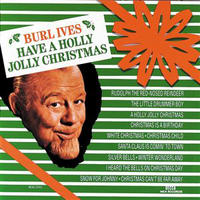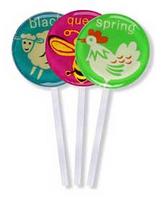TTAB Sustains St. Nick Music's 2(d) Opposition to "LOLLY-JOLLY" for Candy
Any day now, with the holiday shopping season only three months off, we'll be hearing the song that made Burl Ives semi-famous: "Have a Holly Jolly Christmas." Applicant Lolly-Jolly, Inc. won't be so jolly, however, after the Board sustained a Section 2(d) opposition brought by St. Nicholas Music (owner of the copyright in the song) to registration of the mark LOLLY-JOLLY for "candy." The Board found the mark likely to cause confusion with Opposer's HOLLY JOLLY mark registered for "fruit-based snacks." St. Nicholas Music Inc. v. Lolly-Jolly, Inc., Opposition No. 91155371 (August 24, 2005) [not citable].

St. Nicholas relied on both the fruit-based snacks registration and a second registration of HOLLY JOLLY for song books, plush dolls, musical toys, and entertainment services. Applicant L-J did not take testimony or submit any evidence, although it did submit a brief.
As to the first du Pont factor, the Board found the marks to be "substantially similar" both in appearance and sound. As to connotation, the marks obviously differ: the Board took judicial notice that LOLLY means "lollipop" while HOLLY means "Any of numerous trees or shrubs of the genus Ilex, usually having bright red berries and glossy evergreen leaves with spiny margins." The overall commercial impressions are "substantially similar because the difference in meaning of the first word in the parties' marks is overshadowed by the visual and phonetic similarities, particularly the rhyming qualities of the two words within each of the respective marks." On balance, the Board concluded that the marks are "substantially similar."
In light of this degree of similarity, the degree of relationship between the goods and services of the parties need not be as high to support a finding of likelihood of confusion. The Board noted that Applicant L-J's catalogues include fruit-flavored jelly lollipops, "which could be considered a fruit-based snack." Moreover, St. Nick's packaging "depicts little gummy-type pieces that look similar to candy." Several TESS printouts of third-party registrations "include candy or gummy products and fruit-based snacks or fruit snacks." The goods of the parties would be marketed in the same channels of trade, and would be ordinary consumer items purchased without a great deal of care. "These findings under the second, third, and fourth du Pont factors all weigh significantly in opposer's favor...."
 With regard to the song books and entertainment services of St. Nick's other registration, the record did not establish any possible relationship to Applicant's candy. Opposer did submit TESS printouts of third-party registrations that include both candy and toys, but "several of these examples include a wide variety of goods (e.g., Knott's, Atlantis the Lost Empire) and, as such are of limited value as regards candy and toys specifically."
With regard to the song books and entertainment services of St. Nick's other registration, the record did not establish any possible relationship to Applicant's candy. Opposer did submit TESS printouts of third-party registrations that include both candy and toys, but "several of these examples include a wide variety of goods (e.g., Knott's, Atlantis the Lost Empire) and, as such are of limited value as regards candy and toys specifically."The Board concluded that the record supports a finding of likely confusion between HOLLY JOLLY for fruit-based snacks and LOLLY-JOLLY for candy, and it therefore sustained the opposition.
TTABlog note: Opposer's reference to the song "A Holly Jolly Christmas" was a red herring. St. Nick's evidence of its copyright and of the fame of the song was of "little probative value" because Opposer did not establish any trademark rights in the song title, nor any "link between the song and any derivative fame from the song and opposer's HOLLY JOLLY trademark for the identified goods and services."
TTABlog comment: In my experience, children are the main consumers of candy, and they are discriminating consumers. What child worth his or her sugar would choose a LOLLY-JOLLY thinking it was a HOLLY JOLLY, or vice versa? A LOLLY-JOLLY is obviously a lollipop named Jolly. Holly Jolly is a happy leaf. Q.E.D.
Text Copyright John L. Welch 2005.




0 Comments:
Post a Comment
<< Home